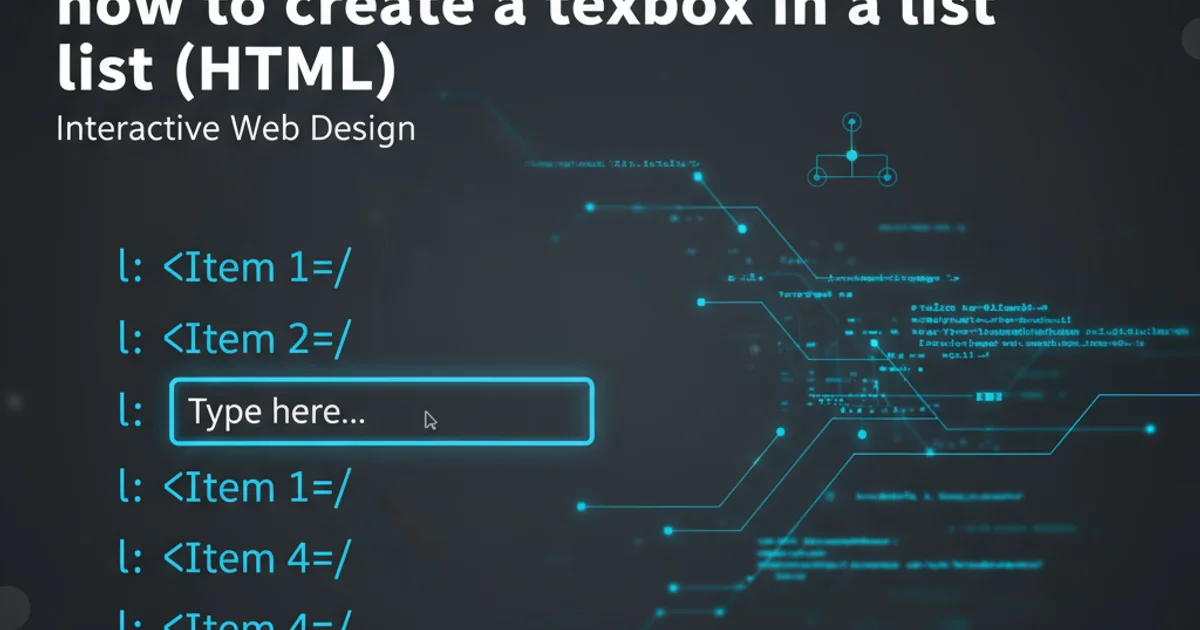Edit a text file on the console using Powershell
Categories:
Editing Text Files on the Console with PowerShell

Learn how to efficiently edit text files directly from the PowerShell console, covering built-in commands and external tools for quick modifications on Windows 7 x64.
Editing text files is a fundamental task for system administrators, developers, and power users. While graphical editors like Notepad are common, there are many scenarios where console-based editing is more efficient or necessary. This article explores various methods to edit text files directly within the PowerShell console, focusing on techniques applicable to Windows 7 x64 environments. We'll cover simple redirection, using Get-Content and Set-Content, and leveraging external command-line editors.
Basic File Manipulation with PowerShell Cmdlets
PowerShell provides several cmdlets that allow for basic text file manipulation without needing a full-fledged editor. These methods are particularly useful for quick changes, appending content, or replacing specific lines. While not interactive in the same way a visual editor is, they are powerful for scripting and automated tasks.
The Get-Content cmdlet reads the content of a file, and Set-Content (or Out-File) writes content to a file. By combining these, you can effectively modify files. For instance, to replace a specific string, you can read the file, perform a string replacement, and then write the modified content back to the file.
$filePath = 'C:\temp\my_file.txt'
(Get-Content $filePath) -replace 'old_text', 'new_text' | Set-Content $filePath
Replacing text within a file using Get-Content and Set-Content.
Set-Content or Out-File without the -Append parameter, the existing content of the file will be overwritten. Always ensure you have a backup or understand the implications before running such commands on critical files.Leveraging External Console Editors
For more interactive editing, especially when you need to navigate, insert, or delete multiple lines, external console-based text editors are indispensable. On Windows, common choices include notepad.exe (which opens a GUI window but can be invoked from the console), and more powerful command-line editors like edit.com (a legacy MS-DOS editor still present in some Windows versions) or third-party tools like nano or vim (often available via Cygwin or WSL, but can be installed standalone).
While notepad.exe is not strictly a console editor, it's the most accessible default text editor on Windows and can be launched from PowerShell. For a true console experience, edit.com offers a basic but functional interface. For advanced users, vim or nano provide a rich set of features within the console.
flowchart TD
A[Start PowerShell Console] --> B{Need Interactive Editing?}
B -->|No| C[Use Get-Content/Set-Content for simple changes]
C --> D[File Modified]
B -->|Yes| E{Editor Available?}
E -->|notepad.exe (GUI)| F[notepad.exe <file_path>]
E -->|edit.com (Console)| G[edit.com <file_path>]
E -->|vim/nano (Console)| H[vim/nano <file_path>]
F --> D
G --> D
H --> DDecision flow for choosing a text editing method in PowerShell.
# Open a file with Notepad (GUI)
notepad.exe C:\temp\config.ini
# Open a file with the legacy MS-DOS editor (console)
# Note: edit.com might not be available on all modern Windows versions or paths
edit.com C:\temp\script.ps1
# If you have Nano installed (e.g., via Scoop, Chocolatey, or Cygwin)
# nano C:\temp\log.txt
# If you have Vim installed
# vim C:\temp\data.csv
Examples of launching various text editors from PowerShell.
nano or vim through package managers like Scoop or Chocolatey. These tools offer powerful features and are widely used in Linux environments, making your PowerShell experience more versatile.Creating and Appending Content
Beyond editing existing files, PowerShell makes it easy to create new files or append content to existing ones. This is often done using Set-Content for new files or overwriting, and Add-Content for appending.
# Create a new file with initial content
'This is the first line.' | Set-Content -Path 'C:\temp\new_file.txt'
# Add more content to the end of the file
'This is the second line.' | Add-Content -Path 'C:\temp\new_file.txt'
'And a third line.' | Add-Content -Path 'C:\temp\new_file.txt'
# View the content
Get-Content 'C:\temp\new_file.txt'
Creating a new file and appending content using PowerShell cmdlets.
These methods are particularly useful for generating configuration files, logging information, or building scripts programmatically. The flexibility of PowerShell's pipeline allows for complex text manipulation to be chained together efficiently.